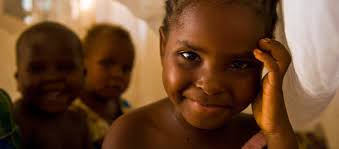Across the dusty streets of Abuja, the nation’s capital, it is not uncommon to see a boy of 6 or 7 years in tattered clothing tugging at the sleeves of pedestrians and gesturing at his mouth and belly, with a pleading face.
In fact, this unseemly sight is not common across major cities in Nigeria. Young children of school age jaywalk through traffic seeking food or money. While this practice used to be mostly associated with Almajiris, nomadic Fulani children, it has now broadened. Child beggars are now drawn from diverse cultural backgrounds as the cost-of-living crisis takes a heavy toll on many Nigerian households.
While children are often projected to be the future, the reality is that a growing number of children confront harsh circumstances, leading to child poverty.
In 2022, the National Bureau of Statistics reported that a staggering two-third (67.5%) of children aged under 18 experienced multidimensional poverty. In a broader perspective, these children were said to be deprived of essential basics, including nutrition, healthcare, education, water and housing.
This multidimensional approach is opposed to focussing only on income and provides a more nuanced understanding of the hardships these children endure in their day-to-day lives.
Although child poverty exists across all parts of Nigeria, it is more prevalent in areas lacking social amenities. UNICEF reckons that children in rural areas are disproportionately affected, with a poverty rate of nearly 90%. This perhaps explains why, within the country’s capital, a place like Gwagwalada is more prone to child poverty than a high-brow location like Maitama.
Consequently, the north-eastern and north-western regions see the highest rates, reaching a staggering 90%, while the Southeast and Southwest see lower poverty with 74% and 65.1%, respectively. This highlights the need for targeted interventions that will address the specific challenges faced in different regions.
The lack of education is, of course, one of a number of consequences of this developmental crisis. In addition, the affected children are likely to experience stunted growth, health risks. Yet a far greater risk is human trafficking and its detrimental effects on children’s psyches
Nevertheless, this crisis can be effectively managed by investing in social safety nets, such as conditional cash transfers, to augment support for low-income families.
Improving access to education can reduce the number of child beggars on the streets. By expanding access to free and quality education, especially in rural areas, the government would be providing a crucial key to breaking the cycle of poverty.
Additionally, the government as well as privileged organisations can boost agriculture and infrastructure in the north in order to create employment for families living in some of its rural areas .
The job of ridding society of child poverty is not restricted to the government alone Individuals can lend support to organisations fighting against child poverty to create a more sustainable environment for the African child.
In Abuja and across major Nigerian cities, young children in tattered clothes begging for food or money have become a common sight, indicative of the widespread child poverty exacerbated by the cost-of-living crisis. What was once primarily associated with Almajiris now spans diverse cultural backgrounds.
The National Bureau of Statistics reported in 2022 that 67.5% of children under 18 face multidimensional poverty, lacking essentials such as nutrition, healthcare, education, water, and housing. This poverty is more severe in areas without social amenities, particularly in rural regions where rates can reach up to 90%. The Northeast and Northwest are the hardest hit, while the Southeast and Southwest experience slightly lower rates.
The consequences of this crisis include lack of education, stunted growth, health risks, and vulnerability to human trafficking. Addressing this issue requires investment in social safety nets like conditional cash transfers and improving access to free, quality education, especially in rural areas. Additionally, enhancing agriculture and infrastructure can create employment opportunities for rural families. Both government and private entities, along with individuals, are integral in the fight against child poverty, aiming to secure a more sustainable environment for children in Africa.






